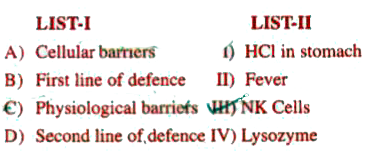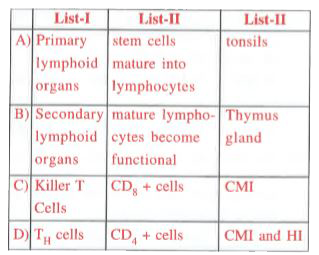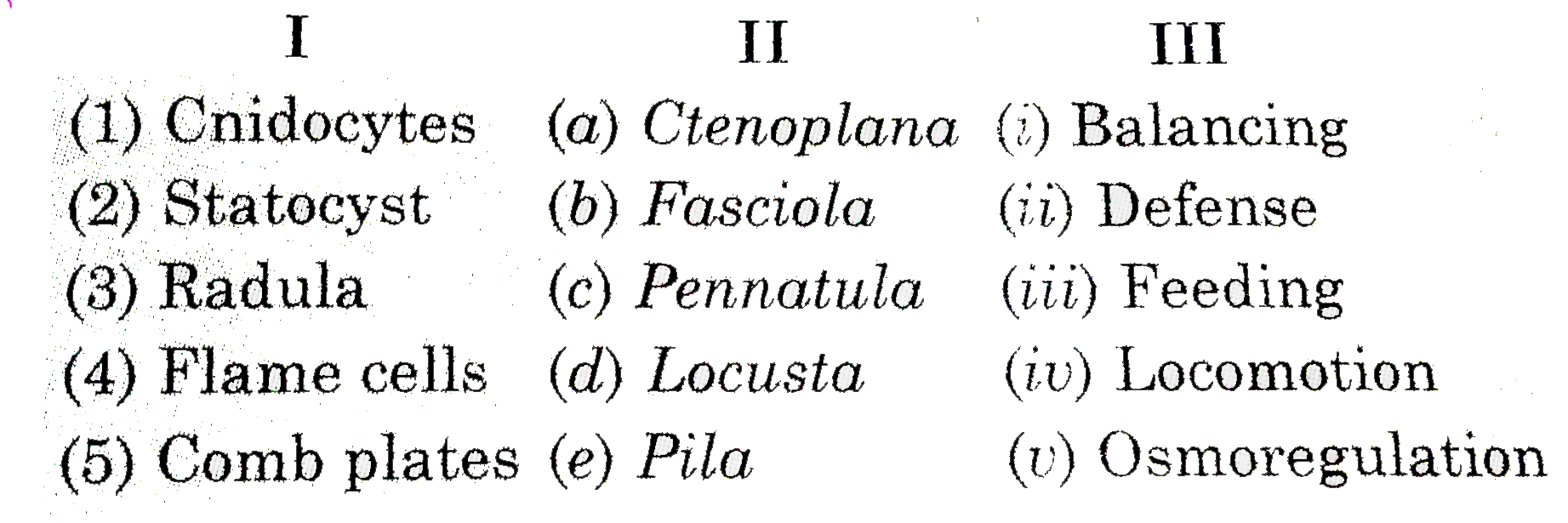Match and choose the true option
NaCl-Inorganic micromolecule
-Organic micromolecule
Starch-Organic micromolecule
Glucose-inorganic micromolecule
The correct Answer is:A
To solve the question of matching and choosing the true option regarding the classification of molecules, we will follow these steps:
Step 1: Understand the Definitions
- Organic Molecules: These are compounds that contain carbon. Examples include carbohydrates, proteins, lipids, and nucleic acids.
- Inorganic Molecules: These do not contain carbon. Examples include salts, minerals, and water.
- Micromolecules: These are small molecules, typically monomers or simple compounds with low molecular weight. Examples include monosaccharides, amino acids, and water.
- Macromolecules: These are large molecules, typically polymers made up of many monomer units. Examples include starch, proteins, and nucleic acids.
Step 2: Analyze Each Option
1. Sodium Chloride (NaCl):
- Contains no carbon → Inorganic
- Simple ionic compound → Micromolecule
- Classification: Inorganic micromolecule (True)
2. Water (H2O):
- Contains no carbon → Inorganic
- Simple molecule → Micromolecule
- Classification: Inorganic micromolecule (True)
3. Starch:
- Contains carbon → Organic
- Polymer of glucose → Macromolecule
- Classification: Organic macromolecule (False)
4. Glucose (C6H12O6):
- Contains carbon → Organic
- Simple sugar → Micromolecule
- Classification: Organic micromolecule (True)
Step 3: Choose the True Option
From the analysis:
- Sodium Chloride is an inorganic micromolecule (True).
- Water is an inorganic micromolecule (True).
- Starch is an organic macromolecule (False).
- Glucose is an organic micromolecule (True).
The only option that is stated correctly in the question is:
- Sodium Chloride (NaCl) is an inorganic micromolecule.
Conclusion
The correct answer is Sodium Chloride (NaCl) as it is classified as an inorganic micromolecule.
---
- Organic Molecules: These are compounds that contain carbon. Examples include carbohydrates, proteins, lipids, and nucleic acids.
- Inorganic Molecules: These do not contain carbon. Examples include salts, minerals, and water.
- Micromolecules: These are small molecules, typically monomers or simple compounds with low molecular weight. Examples include monosaccharides, amino acids, and water.
- Macromolecules: These are large molecules, typically polymers made up of many monomer units. Examples include starch, proteins, and nucleic acids.
1. Sodium Chloride (NaCl):
- Contains no carbon → Inorganic
- Simple ionic compound → Micromolecule
- Classification: Inorganic micromolecule (True)
- Contains no carbon → Inorganic
- Simple molecule → Micromolecule
- Classification: Inorganic micromolecule (True)
- Contains carbon → Organic
- Polymer of glucose → Macromolecule
- Classification: Organic macromolecule (False)
- Contains carbon → Organic
- Simple sugar → Micromolecule
- Classification: Organic micromolecule (True)
From the analysis:
- Sodium Chloride is an inorganic micromolecule (True).
- Water is an inorganic micromolecule (True).
- Starch is an organic macromolecule (False).
- Glucose is an organic micromolecule (True).
- Sodium Chloride (NaCl) is an inorganic micromolecule.
The correct answer is Sodium Chloride (NaCl) as it is classified as an inorganic micromolecule.
Topper's Solved these Questions
- MOLECULES OF THE CELLBOOK - DINESH PUBLICATION ENGLISHCHAPTER - MOLECULES OF THE CELLEXERCISE - CYG
43 Videos
- MOLECULES OF THE CELLBOOK - DINESH PUBLICATION ENGLISHCHAPTER - MOLECULES OF THE CELLEXERCISE - CYG
43 Videos
- MICROBES IN HUMAN WELFAREBOOK - DINESH PUBLICATION ENGLISHCHAPTER - MICROBES IN HUMAN WELFAREEXERCISE - Brain Teasers-VIII
60 Videos
- MOLLUSCABOOK - DINESH PUBLICATION ENGLISHCHAPTER - MOLLUSCAEXERCISE - CYG
10 Videos
Similar Questions
Match the following with reference to Cock- roach and choose the correct option

View SolutionMatch the column I (Ecologist with column II (Concept) and choose
the correct option.

View SolutionMatch the following and choose the correct option

View SolutionMatch the following and choose the correct option.

View SolutionMatch the following and choose the correct option

View SolutionMatch the columns and choose the correct option:

View SolutionMatch the following and choose the correct option :

View SolutionMatch the columns and choose the correct option

View SolutionMatch the columns and choose the correct option

View SolutionMatch the columns and choose the correct option

View Solution
